操作系统导论-课后作业-ch7
发布时间:2024年01月17日
相关软件对应异步社区资源HW-Scheduler
parser.add_option("-s", "--seed", default=0, help="the random seed",
action="store", type="int", dest="seed")
parser.add_option("-j", "--jobs", default=3, help="number of jobs in the system",
action="store", type="int", dest="jobs")
parser.add_option("-l", "--jlist", default="", help="instead of random jobs, provide a comma-separated list of run times",
action="store", type="string", dest="jlist")
parser.add_option("-m", "--maxlen", default=10, help="max length of job",
action="store", type="int", dest="maxlen")
parser.add_option("-p", "--policy", default="FIFO", help="sched policy to use: SJF, FIFO, RR",
action="store", type="string", dest="policy")
parser.add_option("-q", "--quantum", help="length of time slice for RR policy", default=1,
action="store", type="int", dest="quantum")
parser.add_option("-c", help="compute answers for me", action="store_true", default=False, dest="solve")
1.
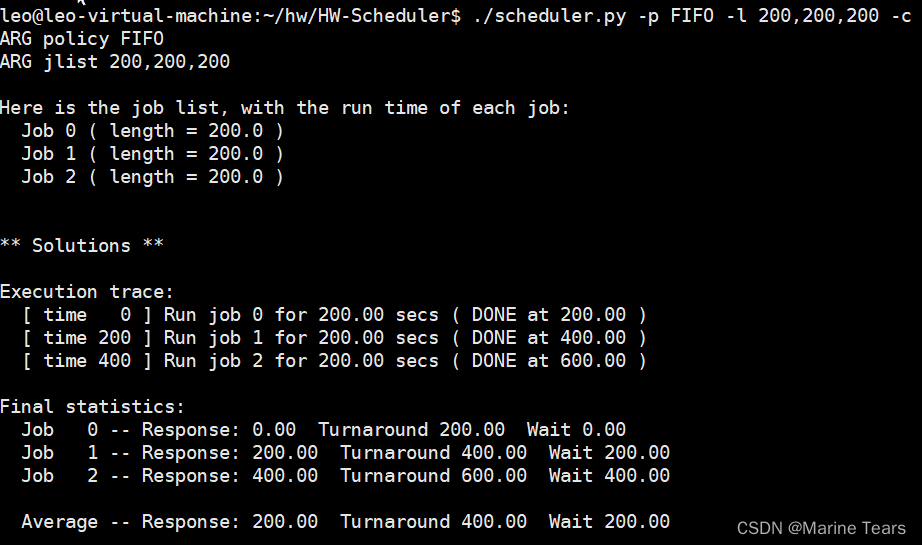
从图中可见,FIFO平均响应时间为200而平均周转时间为400。
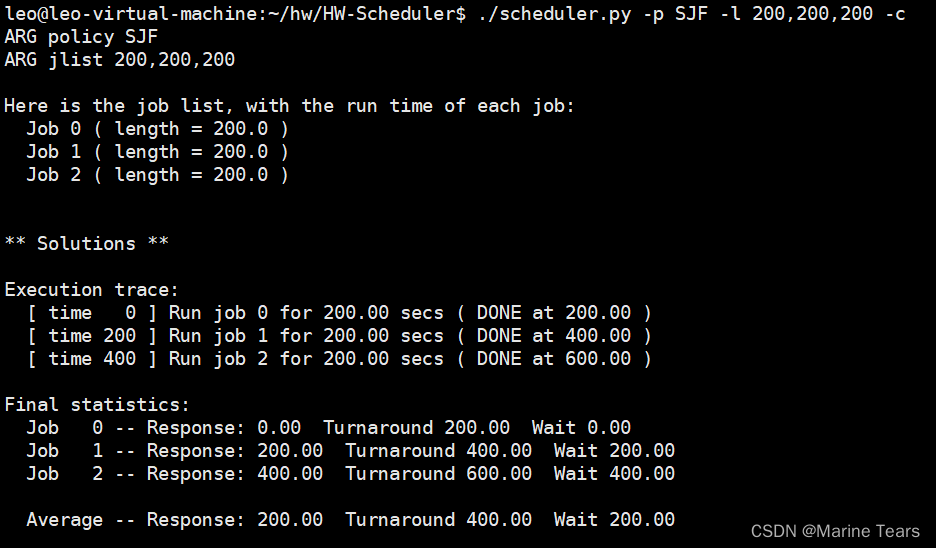
从图中可见,SJF平均响应时间为200而平均周转时间为400。
2.
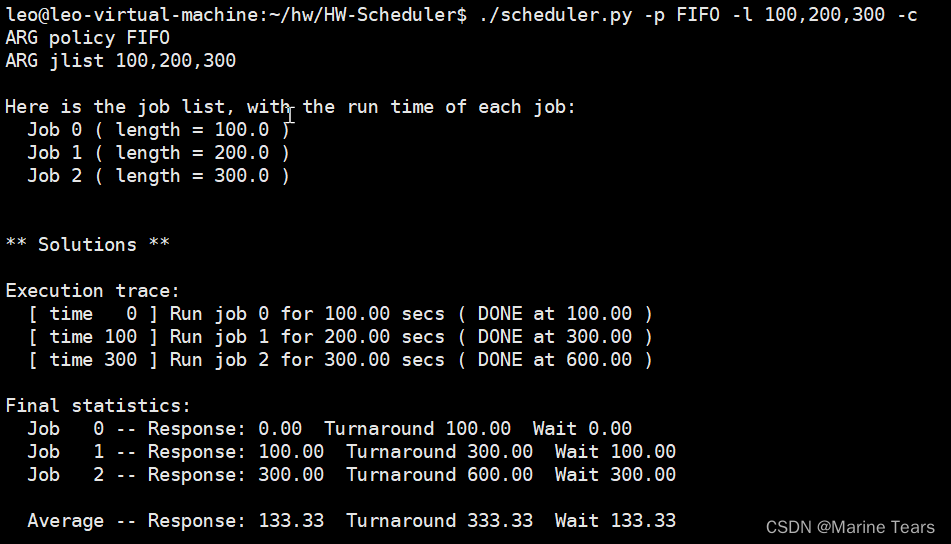
从图中可见,FIFO平均响应时间为133.33而平均周转时间为333.33。
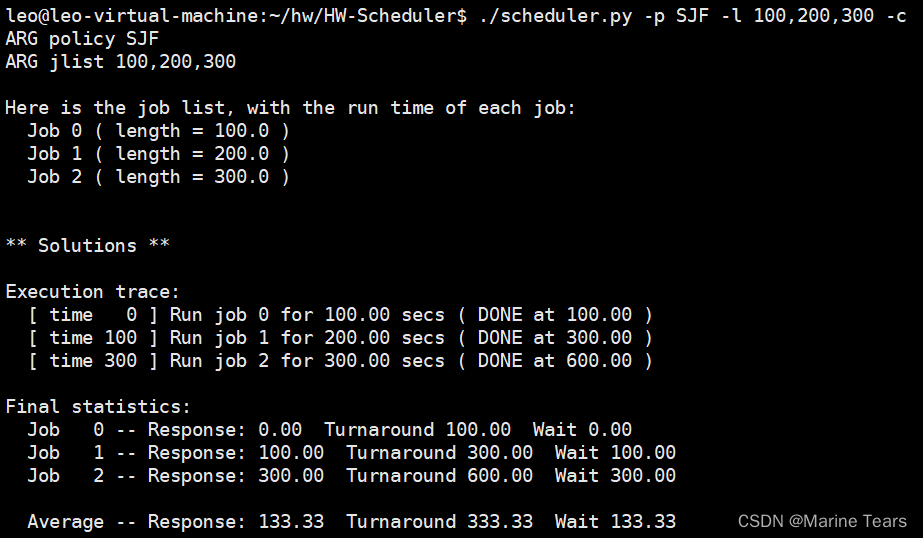
从图中可见,FIFO平均响应时间为133.33而平均周转时间为333.33。
3.


从图中可见,平均响应时间为1.00而平均周转时间为465.67。
4.
当工作长度更短的负载先到时,SJF和FIFO有着相同的周转时间。
5.
当量子长度大于或等于工作负载时,SJF与RR提供相同的响应时间。
6.
和之前问题1进行对比,当工作长度均变为300时模拟结果如下:
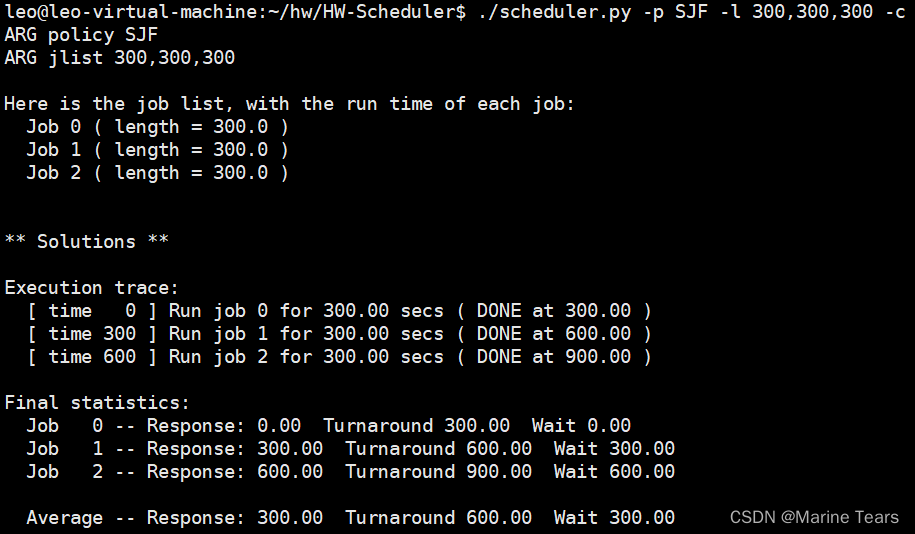
随着工作长度的增加,SJRF的响应时间会更大。
7.
随着量子长度的增大,RR的响应时间会更大。
最坏的情况下,
最大响应时间
=
量子长度
?
(任务个数
?
1
)
最大响应时间=量子长度\cdot(任务个数-1)
最大响应时间=量子长度?(任务个数?1)
文章来源:https://blog.csdn.net/weixin_43917399/article/details/135636644
本文来自互联网用户投稿,该文观点仅代表作者本人,不代表本站立场。本站仅提供信息存储空间服务,不拥有所有权,不承担相关法律责任。 如若内容造成侵权/违法违规/事实不符,请联系我的编程经验分享网邮箱:chenni525@qq.com进行投诉反馈,一经查实,立即删除!
本文来自互联网用户投稿,该文观点仅代表作者本人,不代表本站立场。本站仅提供信息存储空间服务,不拥有所有权,不承担相关法律责任。 如若内容造成侵权/违法违规/事实不符,请联系我的编程经验分享网邮箱:chenni525@qq.com进行投诉反馈,一经查实,立即删除!
最新文章
- Python教程
- 深入理解 MySQL 中的 HAVING 关键字和聚合函数
- Qt之QChar编码(1)
- MyBatis入门基础篇
- 用Python脚本实现FFmpeg批量转换
- 用sdkman在linux上管理多个java版本
- 【C#与Redis】--实践案例--案例 1:使用 Redis 实现缓存
- 有效边表填充算法
- 九、C++结构体(1)
- C语言中对关键字和标识符的理解
- Android 12以上TelephonyManager TelephonyCallback onCallStateChanged 方法不会被调用
- 暴力破解(Pikachu)
- 迅为LS2K0500开发板龙芯国产处理器板扩展显卡、网卡、声卡、视频卡、SATARAID等
- 外汇天眼:35家非法外汇平台被拉黑,两个实体因诈骗被罚!
- 英语长难句分享第十五天解析